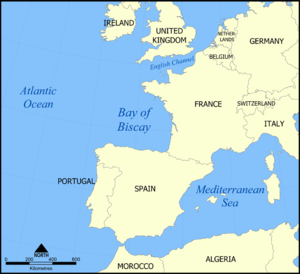Operation Turkey Buzzard
| Operation Turkey Buzzard / Beggar | |||||||
|---|---|---|---|---|---|---|---|
 Area of the operation |
|||||||
|
|||||||
| Belligerents | |||||||
|
|
|
||||||
| Units involved | |||||||
|
No. 2 Wing, GPR No. 295 Squadron RAF |
Focke-Wulf Fw 200 | ||||||
| Casualties and losses | |||||||
| 3 Handley Page Halifax with 21 aircrew 5 Airspeed Horsa with 7 aircrew |
None | ||||||
| 13 RAF aircrew were killed training for the mission | |||||||
Operation Turkey Buzzard, also known as Operation Beggar, was a British supply mission to North Africa that took place between March and August 1943, during the Second World War. The mission was undertaken by No. 2 Wing, Glider Pilot Regiment and No. 295 Squadron Royal Air Force, prior to the Allied invasion of Sicily. Unusually, the mission was known by different names in different branches of the British Armed Forces: the British Army called the operation "Turkey Buzzard", while in the Royal Air Force it was known as "Beggar".
The mission involved Royal Air Force Handley Page Halifax bombers towing Airspeed Horsa gliders 3,200 miles (5,100 km) from England to Tunisia. The British Horsas were needed to complement the smaller American Waco gliders, which did not have the capacity required for the operations planned by the 1st Airborne Division.
During the mission one Halifax-and-Horsa combination was shot down by German Focke Wulf Condor long-range patrol aircraft. Altogether five Horsas and three Halifaxes were lost, but twenty-seven Horsas arrived in Tunisia in time to participate in the invasion of Sicily. Although this supply operation was a success, few of the gliders made it to their landing zones in Sicily during the two British airborne operations that followed, many becoming casualties of the weather conditions or anti-aircraft gunfire.
By December 1942, with Allied forces advancing through Tunisia, the North African campaign was coming to a close; victory in North Africa being imminent, discussions began between the Allies over what their next objective should be. Many Americans argued for an immediate invasion of France, while the British believed that it should be the island of Sardinia, as did General Dwight D. Eisenhower. In January 1943 the Prime Minister, Winston Churchill, and the President of the United States, Franklin Delano Roosevelt, met at the Casablanca conference and settled the debate: the island of Sicily would be the Allies' next objective. The invasion and occupation of Sicily would benefit the Allies by opening Mediterranean sea routes for Allied shipping and allowing Allied bombers to operate from airfields that were much closer to mainland Italy and Germany. The codename Operation Husky was eventually decided on for the invasion, and planning began in February. The British Eighth Army, under the command of General Bernard Montgomery, would land on the south-eastern corner of the island and advance north to the port of Syracuse, while the US Seventh Army, commanded by General George Patton, would land on the south coast and move towards the port of Palermo on the western corner of the island. The landings would be made simultaneously along a 100-mile (160-km) stretch of the island's south-eastern coastline.
...
Wikipedia
